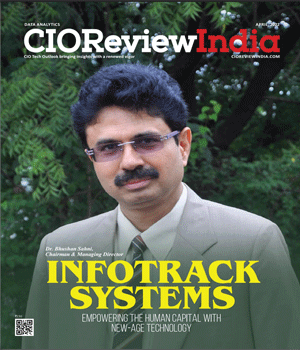
Desire To Be More Efficient Is Mother Of Digital Transformation
Pankaj Parimal, Head of Technical Services, Hella India Automotive Pvt. Ltd | Monday, 07 December 2020, 13:38 IST

What is Digital Transformation ? In simple terms, “Digital / Digitization is the process of converting information into a digital format (bits) while Transformation is to transform businesses or services to become more efficient in meeting the need of today’s consumer’’.
Digital Transformation disrupting competitive world & transpose an organization either to develop strategic competence or new business model (i.e Google, OLA, Apple, Urban clap, Etc.).
Digital transformation is a strategy of an organization which initiate actions designed to deliberately drive Digitalization. Every organization is involved to the concept and wanted to become Digital therefore next question is what the most efficient way to drive digitalization?
One of the Implementation plans in 4 steps is as follows:
Step 1: Develop digital Strategy & Targets aligned with Organisational objectives.
The first step in the transformation process is developing a digital strategy that takes into account the many new ways of value creation with digital technology.
Transformation can’t be planned throughout all the domain simultaneous therefore Management to define priority topics based on their capability to make an Impact in reaching Organizational digital goals. Domain examples are …Digitized Production, Digitized R&D, D supplychain management, IOT assisted Plant maintenance , D Customer Communications etc.
Strategy required to be translated into a clear roadmap with specific measures that drop down to key people in the organization, who will execute them. To track progress and maintain speed, leadership should put in place quantifiable key performance indicators (KPIs). Sample KPIs include the absolute number of digital products and services in the pipeline or the amount of R&D spending on digital technologies compared to total outlays.
Digital Maturity Assessment (Refer below model) used to know current status followed by deciding on targeted level for identified domain, Which will let you develop DT Roadmap with time plan.
Note: Level 6 is highest level called Ultimate destination of DT for any domain.
Step 2: Establishing a digital centre of competence at top Management level
To drive digital Transformation is challenging and required top management commitment therefore having Organizational structure for the digital transformation is critical at Initial stage itself.
The digital center of competence (DCoC) is responsible for setting path and ensuring that learnings are widely communicated to all concerns. In this structure, the competence center does not require to have Profit & Loss account responsibilities, but it does have its own Capital budget, and each business unit (BU) owns its own internal digital initiatives.
Step 3: Change Management at Organisation level
Soft & Hard skill both are needed hand in hand for successful transformation process.
Digital transformations deal with dynamic & latest Technologies therefore often require technical capabilities (artificial intelligence, software development, sensor processing/fusion, Machine learning, cybersecurity). Attracting right talent on board & finding a competent external partner play a key role.
One effective way to connect with tech hot spots is to establish a well-funded digital hub that can identify relevant technologies and link them back to the core business. Getting close to tech hot spots can allow suppliers to scout for new ideas & test them.
Transformations is not only having Technological aspect while cultural agility with Involvement of all employee top to bottom is necessary to reap best benefit.
Step 4: Pilot project & road map to follow
Pilot Project to demonstrate success, which can create enthusiasm across the organization. Launching digital pilot projects happens when small, cross-functional teams able to create novel way to connect with new customers or make an envisioned process improvement by use of digital technology. customer-facing initiatives, Automation and predictive analytics can also be a good example of pilot projects.
Undertaking an ongoing series of pilot projects is what gets the digital transformation started. Critical actions for making these pilots works include Quick Funding, effective teams, follow method, protocols and liability.
Need to standardize the approach for scaling digital solutions across broad domains—such as predictive maintenance, IoT, or core business processes. Standardization can help to accelerate projects by creating common tools that broad groups of people may use. To do this, IT experts should identify the pilot projects already in the pipeline and develop a common technical platform that lays out key specifications, such as how data gets accessed and algorithms are stored.
Further strictly following roadmap must be ensured and Top management should be available for support to overcome from any non-estimated challenges.
Plan -Do-Check-Act i.e PDCA methodology is recommend to use to make Transformation process in close loop & mistake free.
CIO Viewpoint
Accept Data as an Entity on Balance sheet
By Akshey Gupta, Chief Data Officer, Bandhan Bank
Technology Forecast And Concern In 2020
By Anil Kumar Ranjan, Head IT, Macawber Beekay Private Limited
Data Analytics For Enhanced Productivity And...
By Krishnakumar Madhavan, Head IT, KLA
CXO Insights
Regulatory Implications and Data Protection:...
By Richa Singh
Data-Driven Predictive Technologies
By Pankaj Parimal, Head of Launch & Change Management, Hella Automotive Mexico, S.A. de C.V., Mexico, North America.
5 Mantras That Can Drive Organizations Towards...








.jpg)
.jpg)





